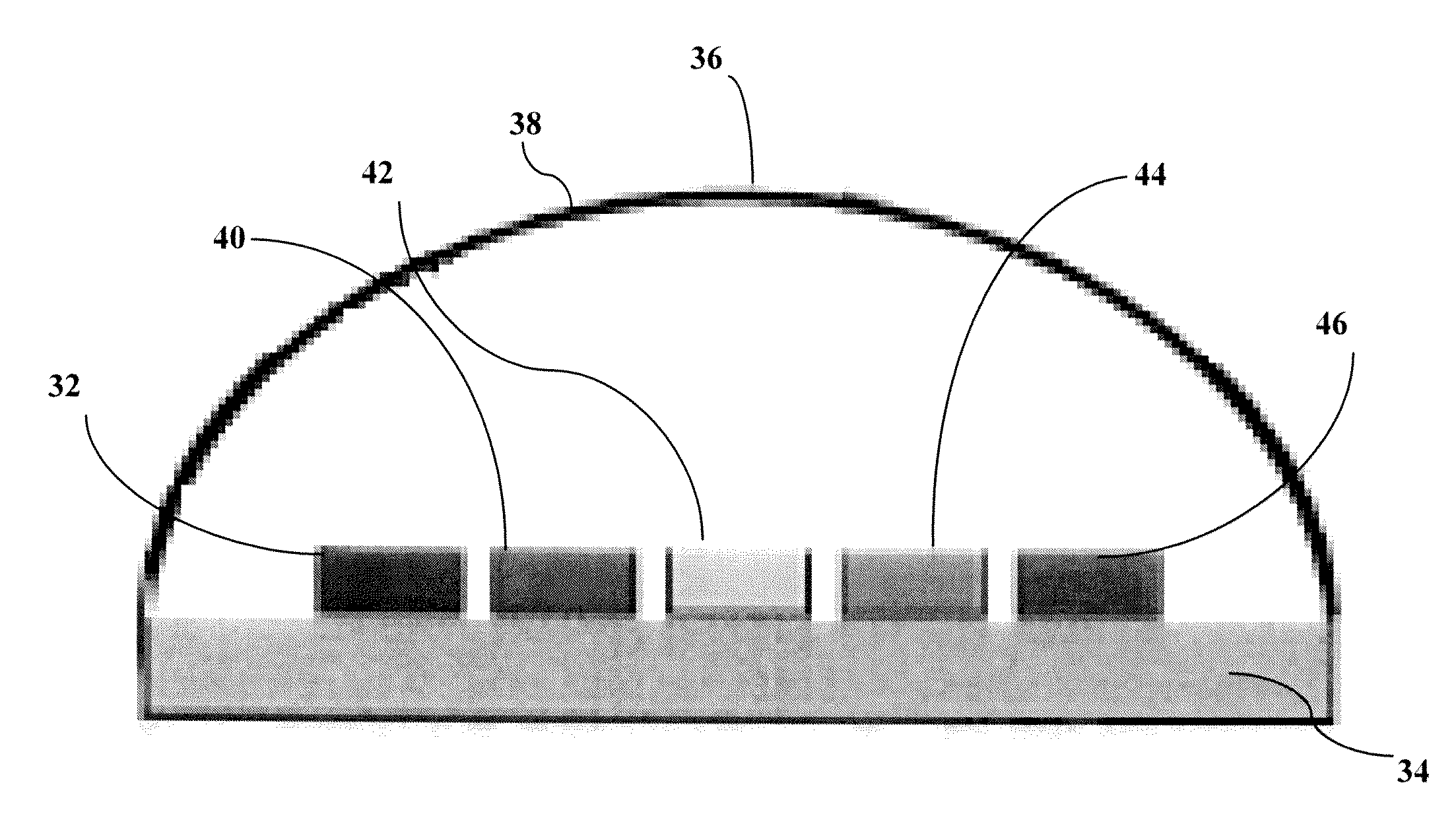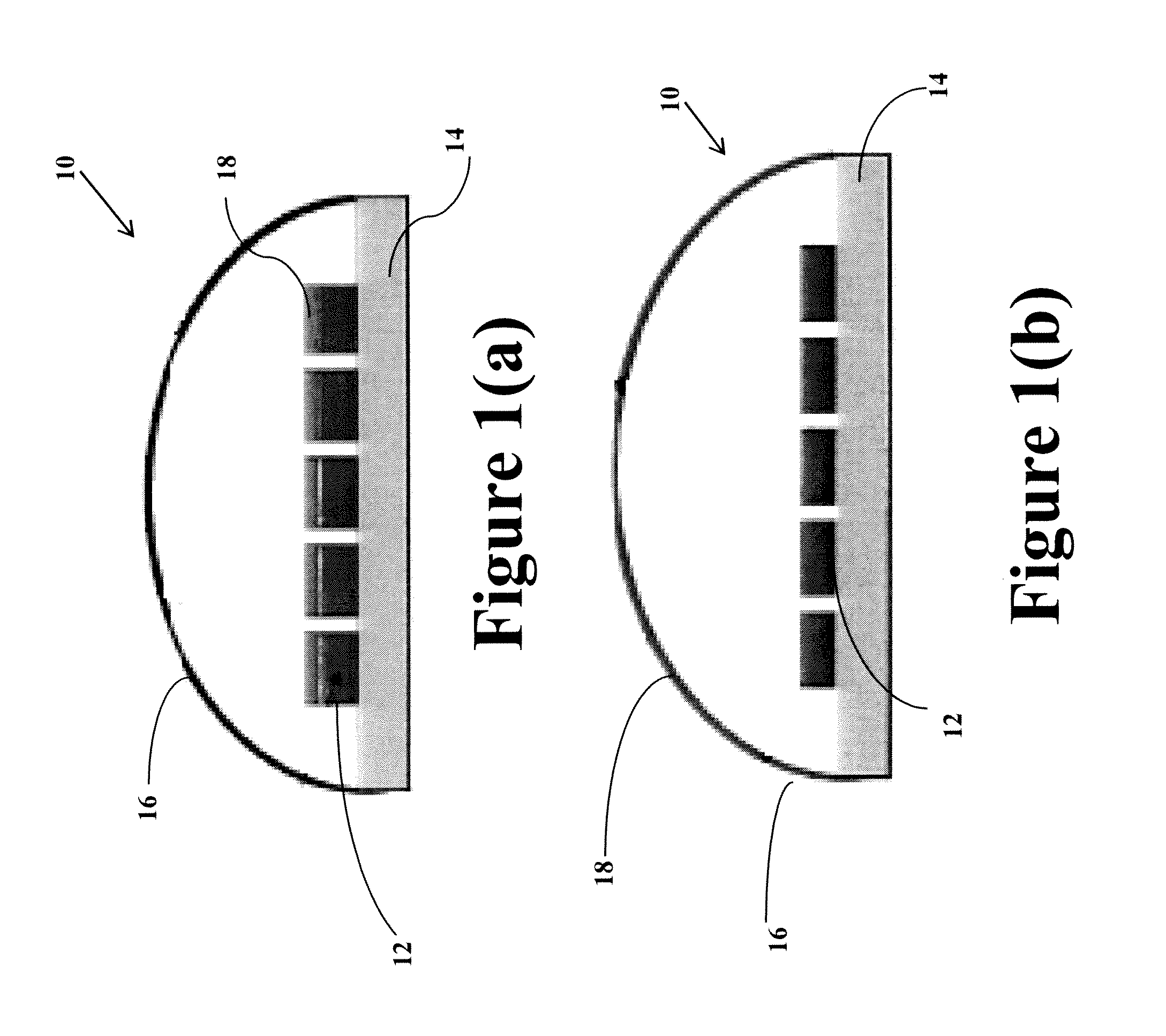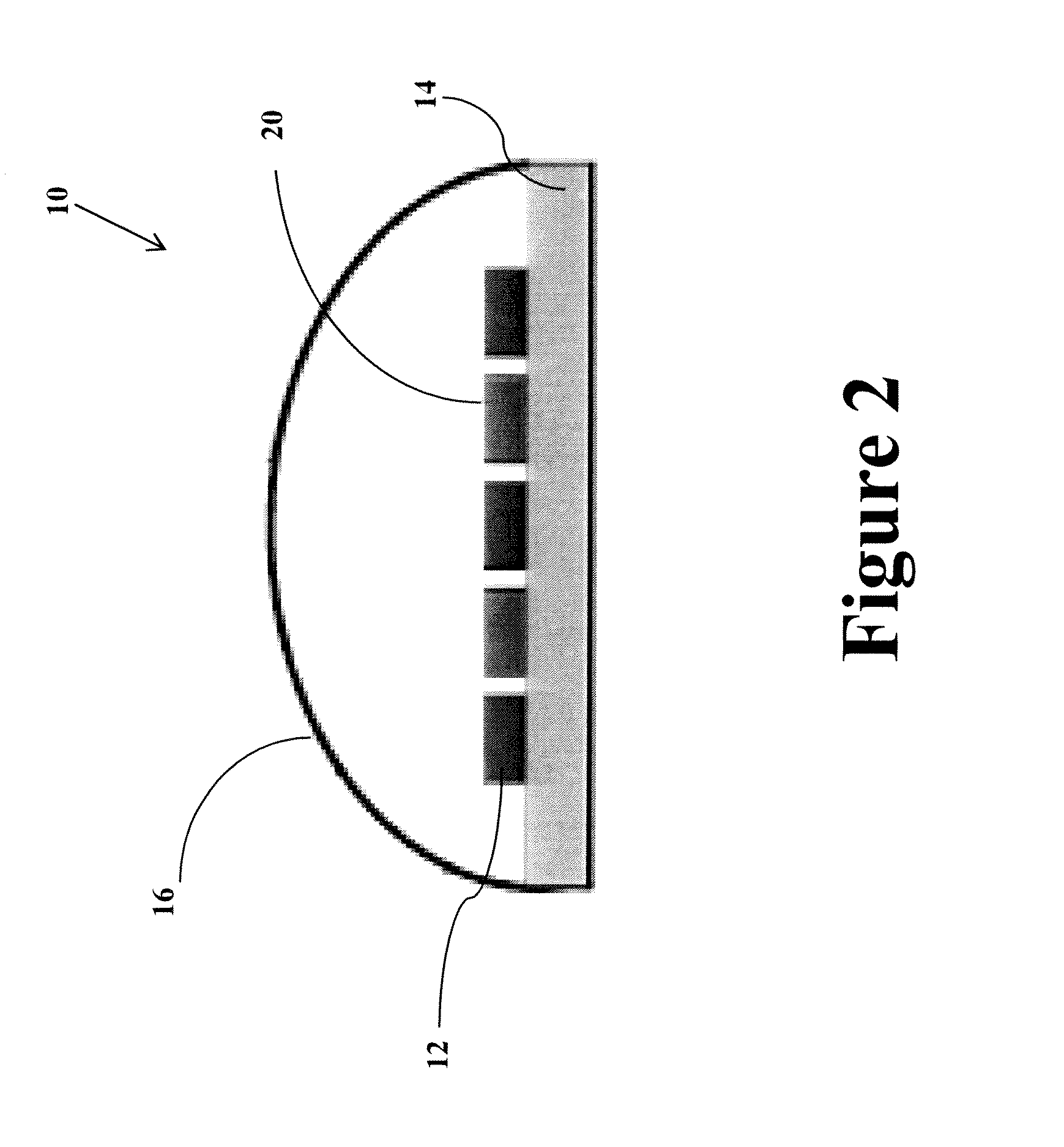Generation of radiation conducive to plant growth using a combination of leds and phosphors
a technology of leds and phosphors, applied in the field of light assemblies, can solve the problems of inability to precisely tailor spectra to be in tune, plant illumination with only blue light will fail to develop bulk, and deficient in blue spectrum
- Summary
- Abstract
- Description
- Claims
- Application Information
AI Technical Summary
Problems solved by technology
Method used
Image
Examples
Embodiment Construction
[0018]Techniques have been developed for converting the light emitted from LEDs to useful light for a variety of purposes. According to one technique, the LED is coated or covered with a phosphor layer. A phosphor is a luminescent material that absorbs radiation energy in a portion of the electromagnetic spectrum and emits energy in another portion of the electromagnetic spectrum. Phosphors of one important class are crystalline inorganic compounds of very high chemical purity and of controlled composition to which small quantities of other elements (called “activators”) have been added to convert them into efficient fluorescent materials. With the right combination of activators and host inorganic compounds, the color of the LED's emission can be controlled. Most useful and well-known phosphors emit radiation in the visible portion of the electromagnetic spectrum in response to excitation by electromagnetic radiation outside the visible range.
[0019]The color of the visible light ge...
PUM
 Login to View More
Login to View More Abstract
Description
Claims
Application Information
 Login to View More
Login to View More - R&D
- Intellectual Property
- Life Sciences
- Materials
- Tech Scout
- Unparalleled Data Quality
- Higher Quality Content
- 60% Fewer Hallucinations
Browse by: Latest US Patents, China's latest patents, Technical Efficacy Thesaurus, Application Domain, Technology Topic, Popular Technical Reports.
© 2025 PatSnap. All rights reserved.Legal|Privacy policy|Modern Slavery Act Transparency Statement|Sitemap|About US| Contact US: help@patsnap.com



